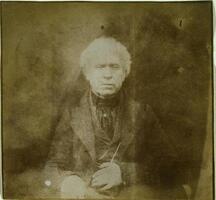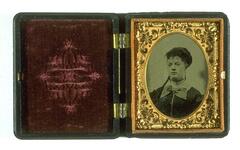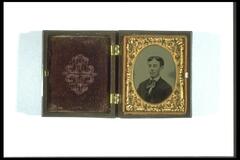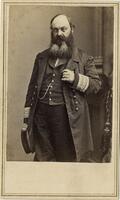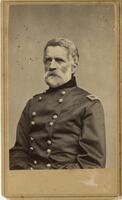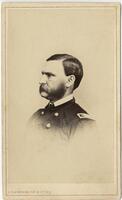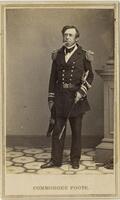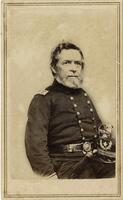Photographic Portraiture in the 19th Century
PHOTOGRAPHIC PORTRAITURE IN THE 19TH CENTURY
This Resource looks at the first instances of the use of photography, rather than painting, for portraiture. Not only was this format cheaper, but it was more immediate and easily reproducible than its historical counterpart. The development of early photography was rapid and changes in the medium happened quickly—from the use of glass daguerreotypes to albumen prints on paper. Some photographic portraits were mounted on cards known by their French name, carte-de-visite. These were like early calling cards that immediately became collector’s items. At the same time, photography began to be used for ethnographic documentation of “natives” and “primitives.” Our collection has a particularly strong group of photographs of American Indians taken in the 19th century.
This collection can be used to consider a number of contemporary topics about presentations and representations of the 19th-century “self” in multiple valances: wealth, station, military office, ethnicity, dress, gender, modernity, etc.
Nadar (Gaspard-Félix Tournachon), Alexander Dumas (père), ca. 1855, UMMA 1976/2.12
Work Description
This carte-de-visite depicts the French dramatist and author, Alexandre Dumas (1802-1870). Early in his life, he was a dramatist and most well known for his novels: The Count of Monte Cristo (1844-45) and The Three Musketeers (1844). This photograph was taken by celebrated French photographer Nadar, originally as a model for his epic caricature print titled Pantéon. Nadar (1820-1910) began his portrait studio, just about the time this photograph of Dumas was taken, when he realized that photography could help accommodate his busy sitters. This portrait of Dumas is an albumen print, a relatively new photographic technique invented in 1850, in which the image is created as a negative that is then transferred to a sheet of paper. This process allowed for unlimited printings and made possible the production of the so-called carte-de-visites. The cards of famous personalities took on the cachet of baseball cards, something to be collected and traded.
Related Article
Anne McCauley, “Caricature and Photography in Second Empire Paris,” Art Journal, vo. 43, no. 4 (winter 1983), p. 355-360.
Article Discussion Questions
- According to McCauley, how does the status of photography change over the period of the Second Empire in France?
- What effects does the new medium of photography have on the idea of portraiture?
- What kinds of social questions are brought up in the early subject matter of photographic portraiture, according to McCauley?
Further Reading
Ann Cvetkovich, “Histories of Mass Culture: From Literary to Visual Culture,” in Victorian Literature and Culture, vol. 27, no. 2 (1999), p. 495-499.
Beatrix Heintze, “In Pursuit of a Chameleon: Early Ethnographic Photography from Angola in Context,” in History of Africa, vol. 17 (1990), p. 131-156.
4 Links
Rate this Resource
AVG: 0 | Ratings: 0
& Author Notes
Creative Commons by-nc-sa (University of Michigan Museum of Art)Last Updated
April 7, 2020 8:19 p.m.Report
Reporting Policy
